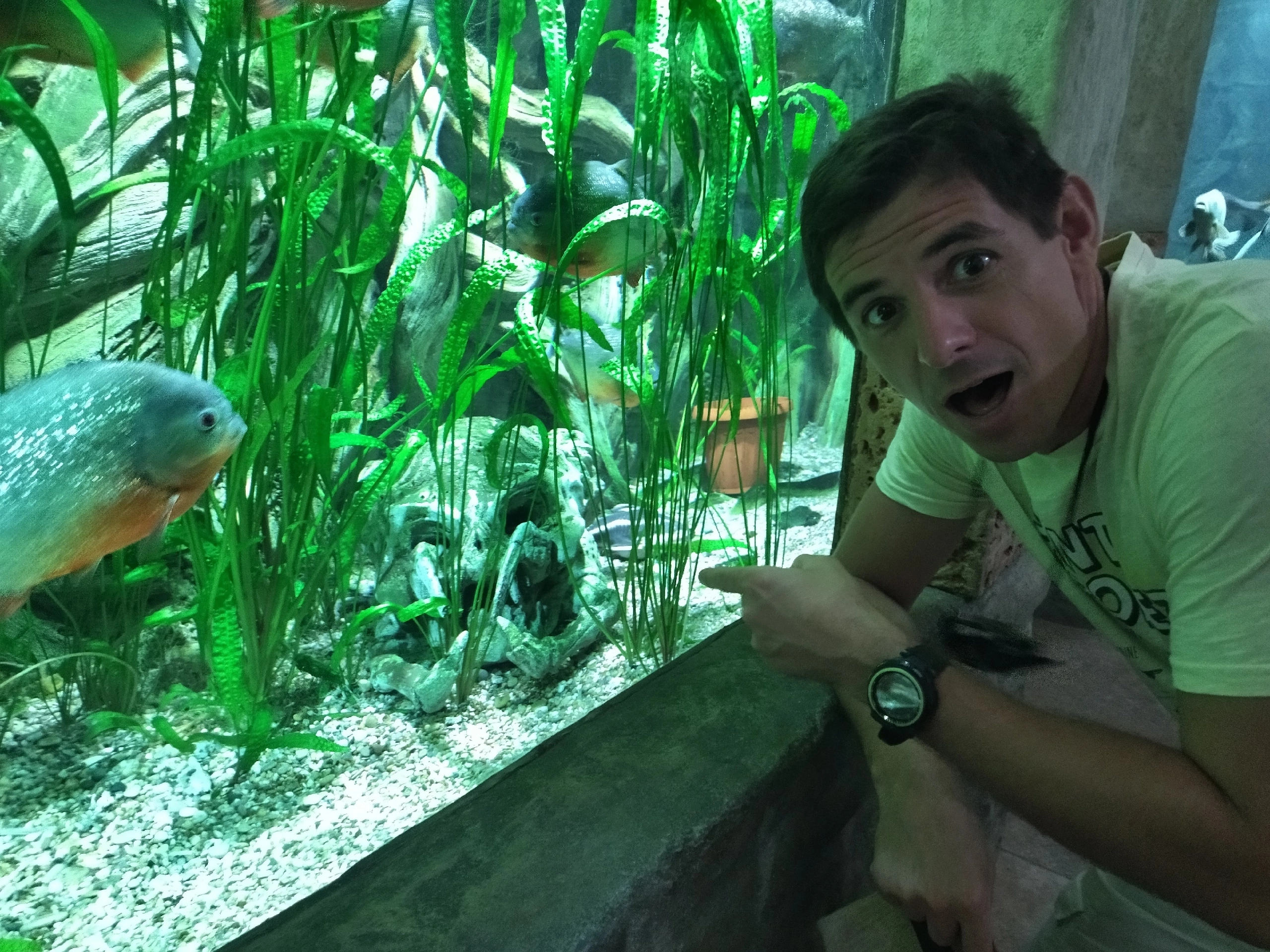Yes, turtles can sleep underwater. But, as with many things related to turtles, it’s not as simple as it might seem.
While some turtles, like box turtles, do not sleep underwater, others, such as mud turtles, musk turtles, and painted turtles, can sleep underwater for up to 7 hours.
These turtles take turns breathing and sleeping. They resurface to breathe before diving back underwater to continue sleeping.
Some turtles, like painted and Japanese pond turtles, even hibernate underwater. These turtles can survive for several months without breathing, using cloacal respiration.
But how do turtles manage to sleep underwater without drowning? And what about the other turtles that don’t sleep underwater?
In this article, we’ll explore their sleeping habits, including their ability to sleep underwater and the adaptations that make it possible.
Turtles’ Natural Habitat
Turtles are found all over the world, from the deserts of Africa to the rainforests of South America. They live in a wide variety of habitats, including forests, grasslands, deserts, and wetlands.
Some turtles are even found in the oceans.
But what do turtles have in common, no matter where they live? They all need water, whether it’s for drinking, swimming, or laying their eggs.
Turtles are ectothermic, which means they rely on their environment to regulate their body temperature. Water helps them stay cool in hot weather and warm in cold weather.
Some turtles, like mud turtles, musk turtles, and painted turtles, live in or near water. They are often found in ponds, lakes, and slow-moving rivers. These turtles are well adapted to life in the water.
They have webbed feet that help them swim, and their bodies are streamlined to reduce drag.
Other turtles, like box turtles, live on land. They have dry, scaly skin that helps them blend in with their surroundings, and they have strong limbs that help them move around on land.
No matter where they live, turtles are amazing creatures that have adapted to their environments in many fascinating ways.
Related Article – Do Turtles Have Teeth?
Turtles’ Sleeping Habits
Turtles, like all animals, need sleep to rest and recharge. But unlike most animals, turtles have a unique way of sleeping that allows them to survive in a variety of environments.
There are two main types of sleep in turtles: rest and torpor.
Rest is a light sleep during which the turtle’s eyes are open and it is alert to its surroundings.
Torpor is a deep sleep during which the turtle’s eyes are closed and it is less responsive to its environment.
On land, turtles sleep in a curled-up position with their limbs tucked in. They may also bury themselves in the sand or under leaves to hide from predators.
In water, turtles sleep with their limbs spread out to the side, which helps them stay afloat.
When turtles sleep underwater, they take turns breathing and sleeping. They resurface to breathe before diving back underwater to continue sleeping.
Some turtles, like painted and Japanese pond turtles, can even hibernate underwater. These turtles can survive for several months without breathing, using cloacal respiration.
Can Turtles Sleep Underwater?
As I explained earlier, turtles can sleep underwater, but it’s not as straightforward as it might seem.
So, how do turtles manage to sleep underwater without drowning? The answer lies in their unique physiological adaptations.
Turtles are air-breathing reptiles, which means they need to surface to breathe. However, when they sleep underwater, they can hold their breath for several hours at a time.
This is possible because their oxygen consumption decreases while they sleep, allowing them to stay submerged for longer periods. When oxygen levels begin to drop, they naturally wake up and surface to breathe, to get their oxygen supply.
Scientific studies have shown that sea turtles can sleep underwater for extended periods, depending on the species.
For example, a foraging sea turtle may typically spend 5-40 minutes underwater while a sleeping sea turtle can remain underwater for 4-7 hours. Remarkably, sea turtle respiration remains aerobic for the vast majority of voluntary dive time.
However, if a sea turtle is forcibly submerged, such as by entanglement in a trawl net, its diving endurance is substantially reduced, making it more susceptible to drowning.
When surfacing to breathe, a sea turtle can quickly refill its lungs with a single explosive exhalation and rapid inhalation, and their large lungs permit rapid exchange of oxygen and avoid trapping gases during deep dives.
So, while turtles can sleep underwater, they have physiological limitations that allow them to do so for limited periods.
These limitations are due to their need for oxygen and the fact that they are air-breathing reptiles.
Scientific studies support the ability of turtles to sleep underwater for extended periods, but their diving endurance is reduced if they are forcibly submerged.
Related Article – Turtles Without Shells
Can Baby Turtles Sleep Underwater?
Baby turtles, or hatchlings, are not capable of sleeping underwater like their adult counterparts. This is because their lungs are not yet fully developed, and they are not able to hold their breath for extended periods of time.
Instead, baby turtles sleep on land or in their nest, just like adult turtles.
However, baby turtles do spend a significant amount of time in the water. They are born with a yolk sac that provides them with nutrients for the first few days of their lives.
After that, they begin to hunt for their own food, which often involves swimming in the water.
While baby turtles are not capable of sleeping underwater, they do have other adaptations that help them survive in the water.
For example, some species of baby turtles have a protective coating on their skin that helps them stay afloat. Others have webbed feet that help them swim more efficiently.
As baby turtles grow and develop, they will eventually become capable of sleeping underwater like their adult counterparts.
But for now, they rely on land or their nest for relaxation.
Final Thoughts
Turtles can sleep underwater, but they have unique physiological adaptations that allow them to do so for limited periods.
Turtles have a decreased oxygen consumption while they sleep, which allows them to stay submerged for longer periods.
However, they have limitations due to their need for oxygen and the fact that they are air-breathing reptiles. Baby turtles, or hatchlings, sleep on land or in their nest.
They are not yet capable of sleeping underwater like their adult counterparts. Turtles are fascinating creatures with many unique adaptations that allow them to survive in a variety of environments.
From their ability to sleep underwater to their protective coatings and webbed feet, turtles are truly amazing animals.
I hope you have enjoyed learning about turtles and their sleeping habits. If you have any further questions or would like to learn more, feel free to explore the resources we have provided. Thank you for reading.
FAQs
How Long Can Turtles Sleep Underwater?
Turtles can sleep underwater for several hours, depending on the species. Some turtles can hold their breath for hours while resting underwater.
Can My Turtle Breathe Underwater?
No, turtles cannot breathe underwater. They need to come to the surface to breathe air.
Do Sea Turtles Sleep In The Water?
Yes, sea turtles can sleep in the water. They can rest underwater for several hours at a time, but they still need to come up to the surface to breathe.
Can Turtles Be In Water All The Time?
Turtles cannot be in water all the time. They need to come out to bask, lay eggs, and breathe air.
Resources – (for further reading)
Wikipedia – Enteral respiration
Britannica – Turtle | Species, Classification, & Facts
Ecomar Belize – Sea Turtle Anatomy – ECOMAR

Jamie has a rich understanding of marine life, garnered through extensive study and hands-on experience with various marine organisms. He has actively participated in marine education programs, broadening public understanding of the ocean’s intricate ecosystems.

